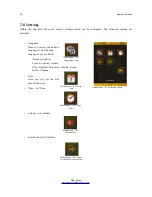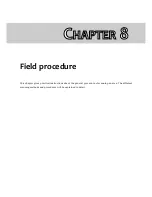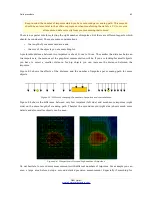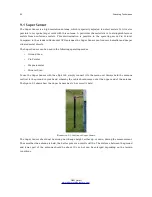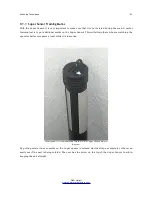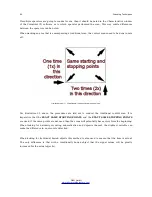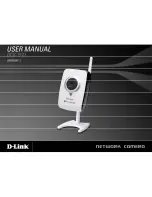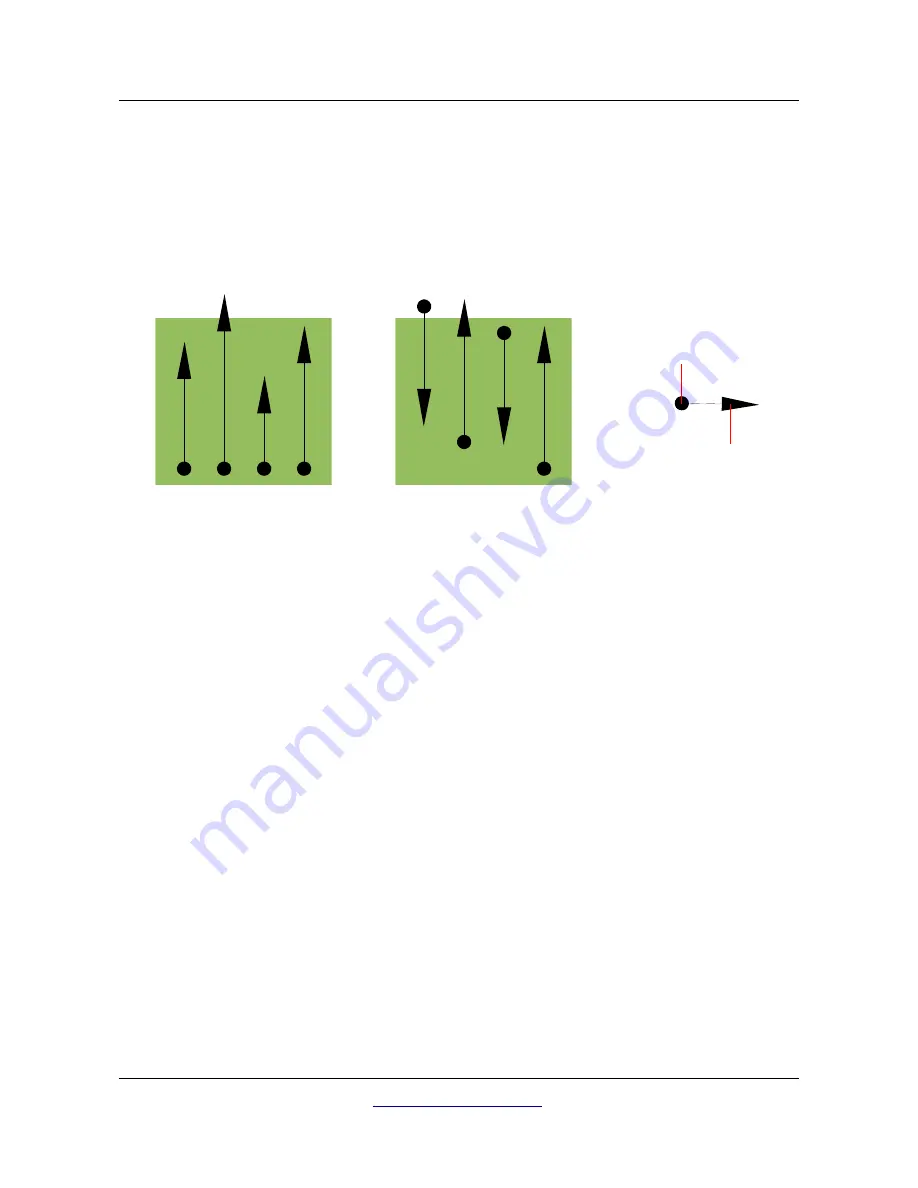
84
Field procedure
bigger objects you can proceed like this. With this manner you can measure a larger area very quickly
and afterward you make new scans localizing the suspect targets.
When conducting a scan it is important to not only make note of how many impulses are being used but
to get a clear picture of what you are scanning, it is very important to watch your speed. Every scan line
should be measured at the same speed as the previous line.
Figure 8.5 shows what can happen, if you walk at different speeds during your scan.
Using a different walking speed in the scanning paths, will cause displacements in the scanning path.
As a matter of fact, a target can get cut into several smaller items or completely lost because it was
missed. Later when the data is downloaded for further analysis, speed errors can make a target
completely unidentifiable and may be discarded.
In general, the following rule is valid: Keep scans at practical sizes where you can see the beginning and
stop lines and can comfortably traverse an area to keep your speed and the distances reasonable.
8.3 Special notes for field procedure
There are some aspects which you should take note of when conducting scans. In principle, a scan is
only as good as the path that was taken. Making errors while scanning will show up in the final
graphical representation also as an error. This will cause frustration and lost time.
Before you start with a measurement in the field, you should think of what you are looking for and if the
selected area is suitable. Measuring without a plan will usually produce unacceptable results. Please
consider the following advice:
•
What are you looking for (graves, tunnel, buried objects, ...)? This question has direct effects on
how a scan is conducted. If you are looking for larger targets, the distance between the single
measure points and scanning paths can be larger, as if you are looking for small targets.
•
Inform yourself about the area, where you are searching. Does it make sense to detect here? Are
there historical references which confirms your speculation? What type of soil is on this area?
Are there good conditions for data recording? Is it allowed to search at this place (eg. private
property)?
OKM GmbH
www.okmmetaldetectors.com
Figure 8.5: Different walking speeds during scanning
Start of
scanning
path
End of
scanning
path
Parallel scanning
Zig-Zag scanning
1
4
2
3
1
2
3
4
Summary of Contents for eXp 4500
Page 1: ...FS Future Series eXp 4500NT Version 1 5 User s Manual ...
Page 5: ...5 9 2 Control Scans 93 OKM GmbH www okmmetaldetectors com ...
Page 9: ...1 Introduction CHAPTER 1 Introduction ...
Page 14: ......
Page 35: ...3 Technical Specifications CHAPTER 3 Technical Specifications ...
Page 39: ...4 Scope of Delivery CHAPTER 4 Scope of Delivery ...
Page 44: ......
Page 78: ......
Page 88: ......







